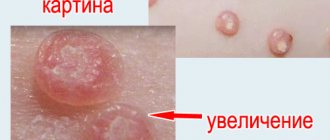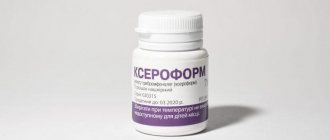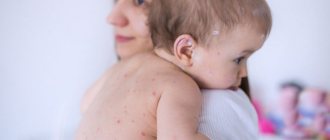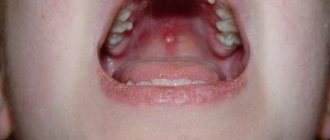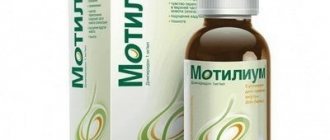Starch for diaper rash in newborns: how to use it and how to prepare it at home
Starch for diaper rash is one of the simplest and most effective methods of combating this childhood illness. This method has been used for quite a long time and can often be found in the pages of reference literature on the care and education of children. However, modern pediatricians do not always approve of starch as a treatment for diaper dermatitis.
Methods for treating diaper rash
There are many ways to treat diaper rash in a child:
- creams, ointments, gels (Fenistil, Bepanten, Solcoseryl, Purelan, Levomekol, D-panthenol, Desitin),
- powders, powders (Baneocin and regular baby powders),
- talc,
- suspensions (Tsindol),
- oils (sunflower, olive, fir, vaseline, sea buckthorn),
- folk remedies - bay leaf, oak bark, hydrogen peroxide and starch.
Starch is applicable both as an independent product and as part of others. The main component of many powders is corn or rice starch. It is also part of the Tsindol suspension.
Application of external agents
Treatment is carried out in two stages. At the first stage, drying and protective agents are used, and at the second stage, wound healing agents are used.
Various creams and ointments based on zinc are used locally. They protect the skin from the influence of urine and feces. External agents reduce the impact of irritating substances, dry, and serve as a source of neutral fats. They need to be applied in a thin layer to the affected area 4-5 times a day. Most effective at the beginning of the inflammatory process.
At the second stage of treatment, creams and ointments with dexpanthenol are indicated, which stimulate epithelization of the skin and have an anti-inflammatory and antiseptic effect. They are best used at the stage when active inflammation has ended and healing has begun. The choice of a specific drug and recommendations for its use are the prerogative of the pediatrician.
Important! Do not lubricate damaged skin on the buttocks and groin of a child with brilliant green, blue, iodine, potassium permanganate and other similar preparations.
Before applying medications, the child is washed with plain water.
Is it possible to treat diaper rash in newborns with starch?
Like all products, starch has benefits and harms. The benefit is that it quickly relieves irritation and protects the baby’s healthy skin without clogging pores or forming a film that prevents the skin from breathing. But the harmful properties of starch are that when used independently, it rolls into lumps that injure the skin. This then creates a favorable environment for bacteria to multiply, which significantly aggravates the situation.
But modern manufacturers of goods for children and medicines could not ignore the beneficial anti-inflammatory and soothing properties of starch. When combined with talc, zinc oxide and various botanicals, rice, potato and corn starch are a powerful way to combat the unpleasant effects of moisture on newborn skin.
Why do you need to use powder for newborns, which one is better to choose?
"Hello! I am a young mother of a wonderful boy. No matter how hard I try to take care of my wrinkles, redness appears periodically. Will baby powder help, how to use it?
This problem worries many young mothers. The baby's delicate skin needs special care.
Among the various care products on the market, you need to choose the one that is personally suitable for your child, because every baby is an individual.
Which powder is best for newborns? What indicators and composition should I pay attention to? How to use it, when? Let's figure it out.
Why do you need powder?
Why do you need powder for newborns, what is its principle of action? The highly sensitive, delicate skin of a baby needs careful and constant care.
This hygiene product is a way to remove excess moisture from the surface of the skin after hygiene procedures. It protects the skin from chafing. Protection against pathogenic microbes is another purpose of the powder.
Powder is a substance with a powdery structure; it intensively absorbs moisture, reducing friction of surfaces. It must be alternated with products with a creamy structure.
If the baby's skin is damp, you need to use a powder product; if it is dry, use a creamy one.
Dry skin occurs with allergic skin irritation or atopic dermatitis. In addition to caring for your baby’s skin, it is worth addressing the issue of your diet. For more information, see the online course Nutrition for a nursing mother without harm to the baby>>>
The advantage of hygienic powder over cream: it does not clog pores, the skin can breathe freely.
The powder has a number of positive qualities:
- Able to perfectly absorb moisture that gets on the skin. This could be sweat, water after swimming, urine, feces.
- When moving, the baby's skin is not injured, since friction is reduced. Folds are especially susceptible to such damage.
- Active components can reduce and eliminate itching, irritation, and redness.
- The respiration of skin cells is not blocked.
- It has some cooling effect if menthol is present, which is important in hot weather.
- If the product contains zinc (oxide), it has antiseptic qualities.
This powder product performs its functions well when using diapers, since the likelihood of skin overwetting increases. Read the useful article How to put on a diaper correctly>>>
Despite the versatility of the product, it has disadvantages:
- Unsafe: with careless movements, the powder or its small particles can get on the baby’s mucous membranes, respiratory organs, eyes, ;
- the product may contain unwanted, unnatural components.
Important! The powder that has absorbed moisture rolls into lumps. They must be removed, otherwise they will injure the skin. This procedure is important in hot weather when the baby often sweats.
How to make starch with your own hands
Potato starch can be easily prepared at home with your own hands. To do this you will need a small set of ingredients:
- potatoes (one kilogram of potatoes produces 40 grams of starch),
- grater, food processor or meat grinder,
- knife,
- sieve and large saucepan,
- parchment or clean cloth,
- tray.
Cooking at home takes no more than half an hour, but the process of drying the finished product can take from two to three days, depending on the humidity and temperature in the room.
- first you need to wash the potato tubers, clean them of peels, eyes, darkening and damage,
- grate or chop potatoes,
- place the resulting mass in a sieve over a container and squeeze the potato juice into it,
- when the remaining liquid has drained, it should be left for 10 minutes, then drain the brown liquid,
- when only a cream-colored sediment remains, you need to fill it with cold water (you can use tap water). Wait 10 minutes again and drain the liquid. Until the sediment turns snow-white and the water is clear, you need to repeat the procedure 2-3 more times.
- cover the tray with cloth or parchment, place the resulting starch on it, after draining the liquid, leave to dry for 8-10 hours,
- after the required time has passed, knead the starch into small pieces with your hands and leave until completely dry,
- dried starch can be mashed with a masher, rolling pin or ground in a coffee grinder,
- pour it into a dry container, cover with a lid.
On the Internet you can find many useful video lessons on preparing starch at home.
To prepare corn starch, pour the ground grains with cold water 1:1, beat and add a glass of hot water. Stir until thickened and place on the stove for 1 minute. Next, the excess liquid must be drained, and the remaining mass must be dried and ground to a powder state.
Rice starch will take a long time to prepare.
- First you need to soak regular raw rice for 3-5 days, changing the water daily,
- drain the water and grind the rice into flour,
- pour the ground rice into a container, wait 3 minutes and drain the water,
- Grind the remaining rice again, repeat the procedure until the grain is completely chopped,
- Infuse the strained liquid for a couple of days until all the starch has settled,
- then drain the water again, and pass the sediment through a cloth and leave it hanging for 8-10 hours until all the water has drained,
- place the starchy mass on parchment or cloth, wait 8-10 hours,
- break into small pieces, let dry completely,
- grind in a coffee grinder.
Starch has always been the first available remedy for combating diaper rash. But today medicine can offer parents much more effective and convenient means. It’s easier to use ready-made powders and powders that you can buy at the pharmacy. But for those who prefer to do everything for the child with their own hands and avoid medications in every possible way, this folk method is quite suitable.
Definition of disease. Causes of the disease
Diaper dermatitis is an acute inflammatory reaction of the skin in the area of contact with a diaper or diaper, which manifests itself in the form of rashes, irritation, swelling or redness of the skin. It occurs due to a combination of factors: irritation from urine, feces, increased humidity and friction [1].
Diaper dermatitis is one of the most common diseases. It affects 7 to 35% of infants and young children. This problem can account for up to 25% of visits to a dermatologist in 1 year of life. There are reports that half of toddlers who wear diapers have suffered from diaper rash at some point. The prevalence among hospitalized infants and children was even higher, ranging from 17 to 43% [2].
Diaper dermatitis occurs more often in children; it usually begins between 3 and 12 weeks of age, with a peak incidence between 9 and 12 months of age. However, the disease can also occur in adults, since some patients require prolonged wearing of diapers (for example, with fecal and/or urinary incontinence). The incidence of diaper dermatitis does not depend on gender or race.
Provoking factors for the occurrence of diaper dermatitis:
- contact with damaging agents: coarse and synthetic fabrics, household and cosmetic products (chlorine bleaches; washing powders containing phosphate);
- infrequent diaper changes, overheating;
- prolonged contact of the skin with urine and feces (for example, with diarrhea);
- microbial factors operating inside diapers and nappies, changing the composition of urine.
Proper treatment is the key to a good result
Children's skin has the ability to quickly recover. After eliminating the damaging factors, the problem disappears in one or two days. You just need to know the rules of treatment:
- The most reliable and safest way is to keep the damaged area in contact with air as much as possible. If a child has diaper rash, it is recommended not to use a diaper for as long as possible. When changing a diaper, you need to let the baby lie freely in the diaper.
- Feces are removed immediately after the diaper has been soiled. In this situation, it is wise to use only water, because soap washes away oil from the stratum corneum of the skin. Alcohol-free baby toilet wipes are suitable for cleansing.
- The skin is wiped (or rather, dried) with napkins or towels made of natural materials (cotton); do not press or rub. Parents should wash their hands well before and after the procedure.
Symptoms of diaper dermatitis
Simple diaper dermatitis
It manifests itself as erythema, i.e. redness of the skin; with further development of the inflammatory process, maceration (impregnation of skin tissue with liquid and swelling) and even erosive surfaces may appear. The greatest irritation occurs in places where the diaper is in close contact with the skin, especially with protruding surfaces (buttocks, lower abdomen, scrotum or labia majora, thighs). Skin folds remain clean.
Diaper dermatitis complicated by fungal infection (Candida)
The rash is often localized in skin folds (groin, buttock). Irritation manifests itself as bright red, well-demarcated spots that peel at the edges. Often rashes in the form of papules give rise to “dropouts,” that is, the same lesions appear on the skin of the buttocks, genitals, abdomen and thighs. In the chronic course, granulomatous papules and nodules may appear [3].
Pathogenesis of diaper dermatitis
Children's skin is very different from adult skin. It is very sensitive and vulnerable, poor in lipids and natural moisturizing protective factor. Lipids are a binding solution between cells, which forms a barrier that protects the skin from infections, ultraviolet radiation and moisture loss. In addition, children's skin is highly permeable and has an increased pH value. High pH levels activate digestive enzymes (proteases and lipases). Therefore, when unfavorable factors appear in children, the protective barrier of the skin is very quickly broken and inflammation develops.
Irritant contact dermatitis
The mechanism of development of this type of dermatitis can be represented as follows:
- Moist environments and friction lead to the destruction of the stratum corneum (outer layer of skin).
- Urine causes excessive hydration of the skin, which increases permeability to potential irritants and microorganisms.
- Fecal enzymes (bacterial ureases) break down ammonia from urea in urine, which further increases the pH of the skin.
- Elevated pH levels activate digestive enzymes (proteases and lipases), which are also found in stool. They cause redness and destruction of the epidermal barrier.
Candidiasis diaper dermatitis
Fungi of the genus Candida are yeast microorganisms, common representatives of the microbial community of our body, which live on the mucous membranes of the gastrointestinal tract, oral cavity, vagina and skin. These are the most common mycotic agents that cause damage to the skin and mucous membranes in humans.
In 90% of cases, candidiasis is an endogenous (internal) infection caused by one's own candida fungi. When unfavorable factors appear (taking antibiotics, immunodeficiency states, etc.), fungi begin to actively multiply and synthesize proteases (digestive enzymes) and hemolysins (toxins that destroy red blood cells). Proteases and hemolysins damage cells and cause clinical manifestations of candidiasis. In 10% of cases, infection occurs from a sick person or a healthy carrier through household contact. For example, a baby can become infected during childbirth when it passes through the mother's infected birth canal.
Fungi (candida and dermatophytes) thrive at higher levels of carbon dioxide (CO2). Diapers do not allow air to pass through well, creating a “greenhouse effect” under them, and due to this, CO2 levels increase [4].
What is starch
Promoters of healthy eating and nutritionists say some pretty unpleasant things about it. They say that excess of this substance can cause excess weight. But for a person leading an active lifestyle, starchy foods in reasonable quantities become a source of energy.
Starches are simple sugars arranged in long chains. The main component of the polysaccharide is glucose, which provides us with vital energy. The polysaccharide chains bend and fold to form microgranules. They are the ones who creak when we rub starch with our fingers.
Polysaccharides for plants also serve as an energy accumulator, so there are many of them in seeds and roots (tubers). Half of this substance consists of, for example, wheat and corn. The white powder has neither taste nor smell, it does not dissolve in water, but at high concentrations it forms a viscous mass - a paste.
Classification and stages of development of diaper dermatitis
Severity of diaper dermatitis:
| Degree | Symptoms |
| Light | - Mild erythema in limited areas. — Minimal maceration and rubbing of the skin. - Covers less than 10% of the surface of the skin covered by the diaper. - There is no discomfort or pain. |
| Average | - More extensive erythema with maceration and superficial erosions. — Covers more than 10% of the skin surface covered by the diaper — Discomfort or pain is moderate |
| Medium-heavy | - More extensive erythema with maceration and superficial erosions. — Discomfort or pain is intense. |
| Severe (papulo-erosive pseudosyphiloid Sevestra-Jacquet) | — Multiple ulcers and erosions with raised edges. — Discomfort or pain is very intense. |
There are various clinical forms of diaper dermatitis .
- Diaper dermatitis due to friction. Its main cause is mechanical damage to the baby’s skin from the diaper material. In this case, the folds of the skin are clean, the protruding surfaces that are most adjacent to the diaper or diaper are affected.
- Contact irritant diaper dermatitis. Most often located in the anal area, the process includes inflammation of the intergluteal, inguinal folds, skin of the abdomen and thighs. The reason for its occurrence is prolonged contact of the skin with urine and feces (as a result of stool disturbances).
- Diaper dermatitis complicated by candidiasis. Sometimes it is also called intertriginous. This is the most common complication of diaper dermatitis, which was not treated in time. A variety of pathogenic and opportunistic microflora (fungi and bacteria) easily accumulate on damaged skin. The rash is usually maculopapular, bright red, well demarcated.
The most common are the first two forms of diaper dermatitis. With proper care and treatment, they usually go away within three days.
In Europe and the USA, there is no division between diaper dermatitis, which arose due to friction, and irritant dermatitis; they are united by a single term - simple or irritant diaper dermatitis, also sometimes called napkin dermatitis (napkin dermatitis) [5]. The name is probably due to the fact that skin damage occurs due to frequent use of napkins.
Complications of diaper dermatitis
Diaper dermatitis can be complicated by superinfection (addition of another infection), such as fungal (Candida) or bacterial. In case of bacterial infection, pyoderma develops. This is a purulent skin lesion in the form of pustules (pustules) and even abscesses and blisters that burst and leave extensive erosive surfaces. Pyoderma is very dangerous, as it can spread not only to neighboring areas, but also deep into the skin with the possible development of sepsis (a dangerous infectious disease caused by pathogens entering the blood).
In premature infants, cutaneous candidal infections can penetrate the dermis and cause potentially life-threatening invasive systemic candidiasis that affects internal organs [6] . Symptoms will depend on the location of the infection. As a rule, they include dysphagia (impaired swallowing), damage to the skin and mucous membranes, impaired hearing, vision, vaginal signs (itching, burning sensation, discharge), fever, impaired renal function with further development of shock.
Is it possible to use Purelan, Baneocin and Bepanthen for diaper rash?
If the child’s skin does not turn red, but becomes covered with a dry crust and begins to crack and rot, then it is necessary to use heavy artillery.
After all, if you have developed the second or third stage of streptoderma, then you need to not just remove the redness, but fight the bacterial infection. If the child has the second degree, then treat the skin with Bepanten and Puralan. They will quickly relieve inflammation and promote rapid regeneration. For the treatment of the third stage of streptoderma, it is best to use baneocin. This antibacterial agent kills both gram-positive and gram-negative bacteria equally well.
Diagnosis of diaper dermatitis
Before the examination, the doctor asks about the symptoms of the disease:
- When the rash appears (dermatitis that lasts more than three days can become infected).
- Is there any restlessness, pain or itching of the skin, especially during bowel movements or urination (the child will be restless and may cry).
- Is there a change in stool frequency or diarrhea?
- What kind of detergents, baby wipes and diapers are used. How often do they change?
- Are barrier emollient creams, pastes or powders used?
- What does the child receive: breast milk or formula. Have new foods been introduced into the diet? Many studies have reported that formula-fed infants are more likely to develop moderate to severe diaper dermatitis than breastfed infants [7] .
- Has the child taken medications that provoke the development of diaper dermatitis (antibiotics, laxatives).
- Are there any concomitant diseases (atopic dermatitis, constipation, recent viral gastroenteritis, malabsorption syndromes - impaired absorption of nutrients in the small intestine).
Next, the doctor examines the patient for irritation or damage in the diaper or diaper area.
If candidal dermatitis is suspected, a deeper examination may involve scraping the skin and examining it for the presence of fungus. If diaper dermatitis does not respond to standard treatment or is not typical in appearance, a skin biopsy is performed to exclude other skin pathologies (for example, neoplasms).
In case of persistent, chronic course of diaper dermatitis, it is necessary to exclude zinc deficiency, which may indicate the presence of a rare hereditary congenital disease - acrodermatitis enteropathica. The cause of this pathology is a metabolic disorder leading to a serious zinc deficiency. Manifested by dermatitis, baldness, diarrhea and growth retardation. It usually appears in the first 4 to 10 weeks of life in infants who are not breastfed and during weaning in breastfed infants. This is because cow's milk contains more zinc binders, which interfere with the absorption of zinc. This disease is treated with zinc preparations for life.
Differential diagnosis includes contagious impetigo, candidiasis, seborrheic dermatitis, psoriasis and other skin diseases that are localized in the anogenital zone and are associated with pathogens.
Will Vaseline oil or baby cream help with diaper rash in newborns?
Vaseline oil is a mineral substance that does not contain harmful organic elements. It has absolutely no smell, taste, does not affect internal organs and does not accumulate in the body. All these properties allow young parents to safely use liquid paraffin to care for the delicate skin of their little children.
And most importantly, it can not only treat streptoderma, but also be used for prevention. If you lubricate your baby’s bottom with Vaseline oil every time you change a diaper, then you won’t be afraid of any inflammation.
Treatment of diaper dermatitis
When to see a doctor:
- The rash does not go away with proper hygiene measures and skin care for 2-3 days.
- The rash includes peeling skin, blisters, blisters, purulent elements, erosions and ulcers.
- A bright pink or red rash appeared while taking antibiotics.
- The rash is very painful, which may be a sign of cellulite - an acute diffuse purulent inflammation of the subcutaneous fat. The cause of cellulite is the penetration of microorganisms from the external environment into fatty tissue through damaged skin.
- Increased body temperature in addition to a rash.
- Discomfort and pain during bowel movements and/or urination [8] .
To restore the skin barrier in simple irritative dermatitis, according to American and European sources, the following external therapies are used:
- Zinc oxide. As part of a protective cream, it is a first-line therapy.
- Lanolin.
- Petrolatum.
- Vitamin A creams (eg A & D ointment).
- Creams containing titanium oxide, paraffin, dimethicone or other silicones. These components have a water-repellent effect, which helps prevent excessive skin hydration and the development of maceration.
- Bentonite cream 50% (bentonite is a natural clay mineral, non-toxic, forms a gel upon contact with water). Shown to be highly effective and safe [9].
- Guiazulene-containing sticks (guaiazulene is a synthetic analogue of chamomile). It has an anti-inflammatory effect and accelerates skin regeneration [10].
- A very interesting study showed that topical application of breast milk can be as effective as hydrocortisone ointment 1%. It can be used to relieve symptoms in healthy children with mild to moderate diaper dermatitis [11]. Breast milk contains a lot of useful substances and molecules that have a protective and healing effect (immunoglobulins, lactoferrin, etc.).
- A short course (less than two weeks) of low potency topical corticosteroid cream (class VI or VII) may be considered for the treatment of irritant diaper dermatitis that is not responsive to other treatments. A cream with hydrocortisone 1 or 2.5% or desonide is recommended. It can only be used as prescribed by a doctor, strictly following the instructions for the duration of use and application technique. Improper use of strong corticosteroids (betamethasone) can cause severe complications, such as Cushing's syndrome (damage to the body's neuroendocrine system) due to the high permeability of the skin and the occlusive properties of the diaper [12].
Potentially harmful topical treatments for diaper dermatitis should be avoided. These include products with an associated risk of systemic toxicity and/or methemoglobinemia (increased levels of methemoglobin), such as:
- baking soda (sodium bicarbonate);
- phenolcampharaboric acid (disinfectant);
- benzocaine salicylates (disinfectant);
- diphenhydramine (diphenhydramine). The death of a child caused by lethal concentrations of diphenhydramine when applied topically was recorded [13].
- The use of talc and corn starch is not recommended due to reports of aspiration (inhalation), which can lead to pneumonitis (specific inflammation of the lungs).
In the Russian Federation, for the treatment of irritant (simple, irritated) diaper dermatitis against the background of diarrhea, it is recommended to prescribe dexpanthenol 5% externally in the form of a cream in combination with zinc ointment for 7 days [14].
Treatment of candidiasis diaper dermatitis according to European studies and recommendations:
- Nystatin cream. Widely used topically as it has a high safety profile.
- Other antifungals that are effective against Candida may be prescribed, such as clotrimazole, econazole, ketoconazole, miconazole, oxyconazole, sertaconazole, and ciclopirox.
- In children, the combined antifungal, barrier drug miconazole in zinc oxide and petroleum jelly can be used. The drug is approved by the FDA (Food and Drug Administration, USA). It is applied topically at every diaper change.
In the Russian Federation, the following drugs are used topically for the treatment of diaper dermatitis complicated by fungal candidiasis infection:
- clotrimazole 1% cream [15] ;
- nystatin ointment;
- natamycin 2% cream [16]
For the treatment of diaper dermatitis complicated by a bacterial infection (staphylococcal or streptococcal) it is recommended:
- mupirocin 2% ointment;
- fusidic acid 2%.
Systemic antifungal therapy may be required for recurrent or widespread skin infections caused by Candida fungi or for oral and gastrointestinal candidiasis. In this case, oral suspensions of nystatin or fluconazole are used. Possible side effects are indicated in the instructions for the drugs.
Other treatments include herbal remedies: chamomile, aloe vera, olive oil, evening primrose oil, calendula oil. The basis proving the effectiveness of this group of drugs is insufficient.
Friend or foe?
The debate about the dangers and benefits of starch will continue until the parties agree on the obvious - it’s all about quantity.
Arguments for":
- Rich source of energy. Thanks to this substance, porridge, potatoes, bread, and pastries give you a feeling of fullness for a long time.
- Massages the intestines, forming a bolus that stimulates and improves digestion.
- Protects the digestive tract from organic acids found in fruit purees for children. The enveloping properties of jelly and porridge are well known.
- Creates favorable conditions for the development of beneficial bacteria in the colon.
- Normalizes stool. The polysaccharide is able to absorb excess fluid in the intestines.
- Contains phosphorus, calcium and potassium.
Arguments against":
- If consumed excessively, it causes constipation.
- May cause allergies.
- Increases the calorie content of the main product and promotes weight gain.
- A rich source of carbohydrates, devoid of vitamins.

